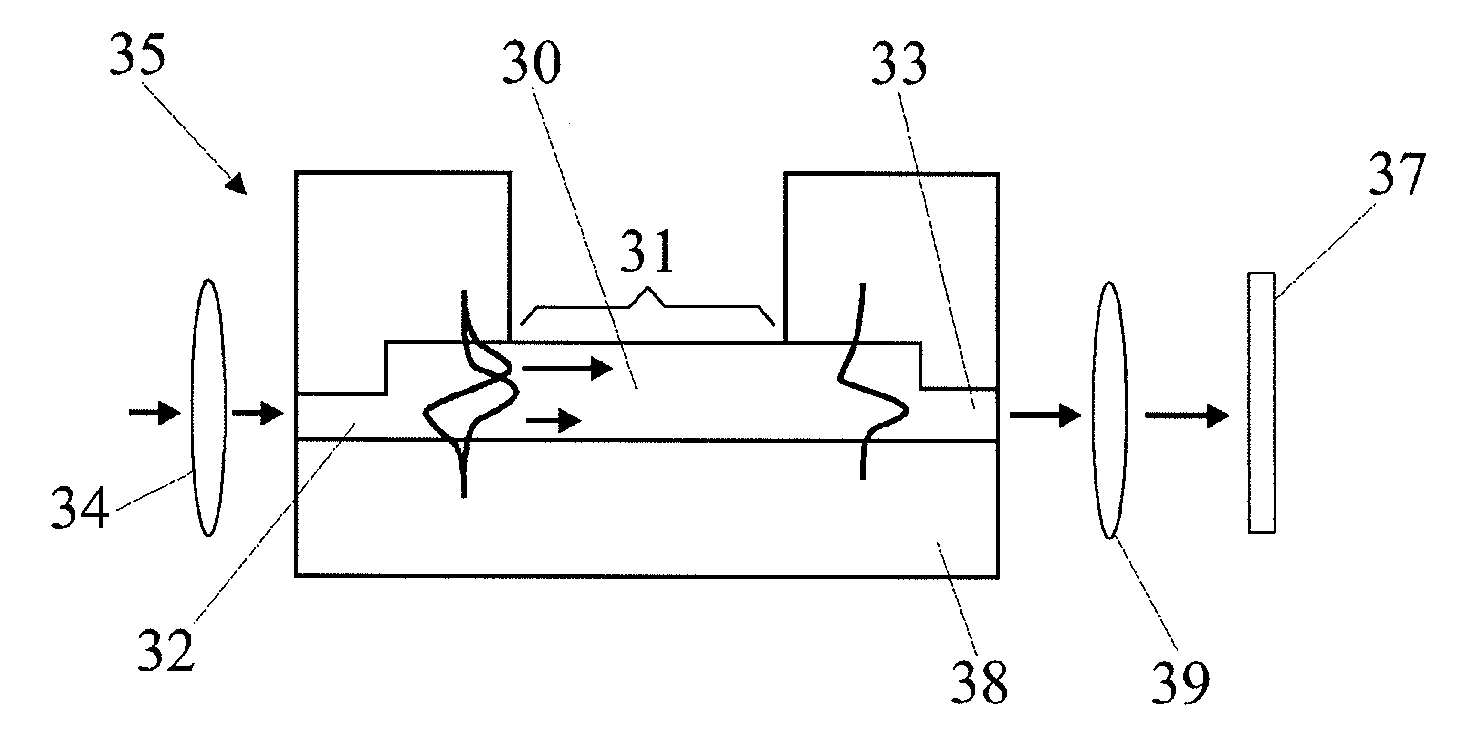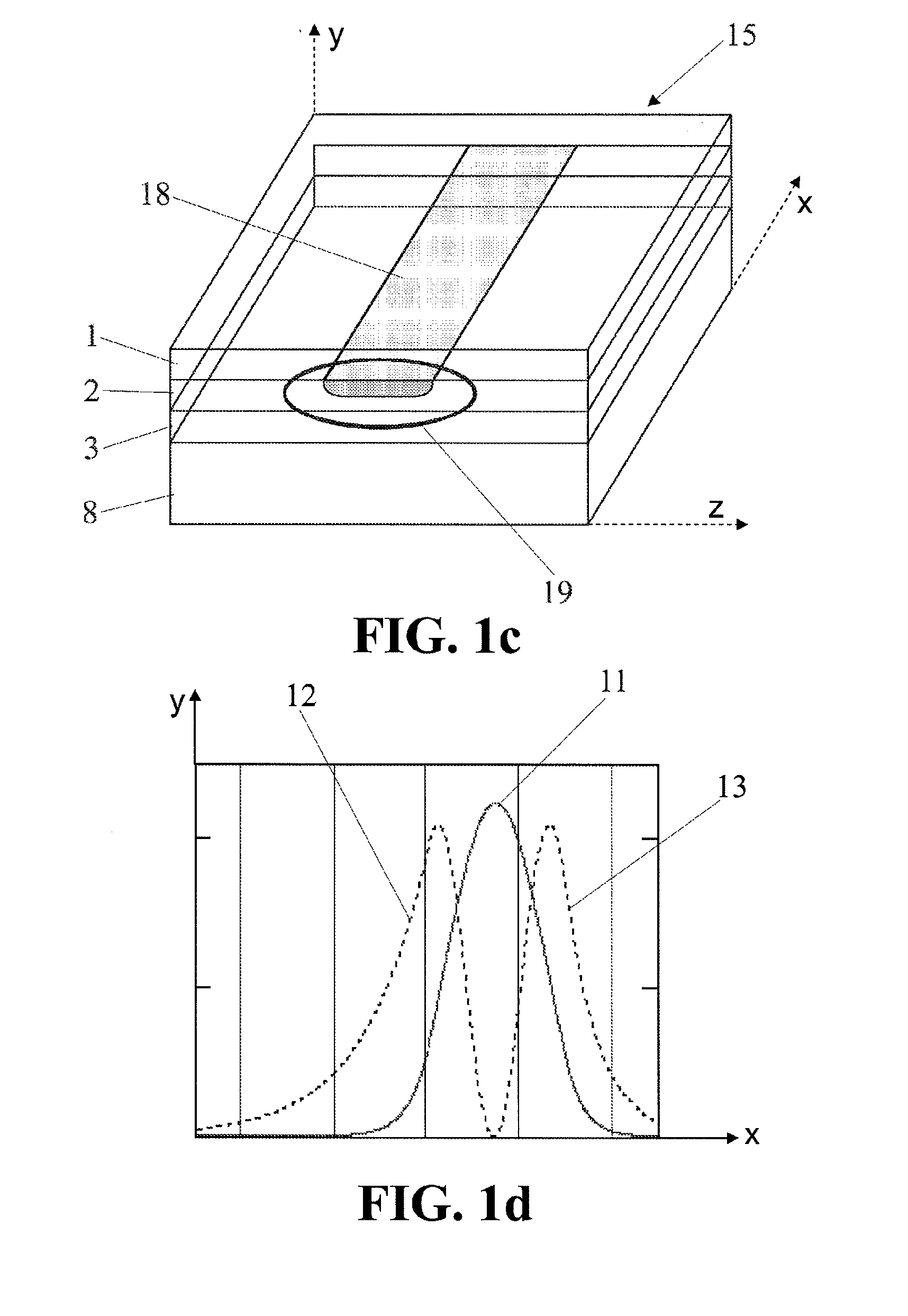Interferometer and sensor based on bimodal optical waveguides, and detection method
a technology of optical waveguides and interferometers, applied in the direction of optical waveguide light guides, optical elements, instruments, etc., can solve the problems of less laborious and repeatable experiments, less accurate detection of molecule detection, and difficulty in accurate splitting of light in interferometers with two branches
- Summary
- Abstract
- Description
- Claims
- Application Information
AI Technical Summary
Benefits of technology
Problems solved by technology
Method used
Image
Examples
Embodiment Construction
[0042]In the context of the present invention, the following drawings must be considered:
[0043]As illustrated in FIG. 6, a “transverse mode” of a light beam of electromagnetic radiation is a determined intensity pattern of radiation measured along a line formed by a plane (plane 1 or plane YOZ) perpendicular to the propagation direction of light beam and a plane (plane 2 or plane XOY) perpendicular to a waveguide structure and going along the propagation direction. In the context of the present invention, the term “vertical” is to be considered as a synonym of “transverse”.
[0044]As illustrated in FIG. 7, a “lateral mode” of a light beam of electromagnetic radiation is a determined intensity pattern of radiation measured along a line formed by a plane (plane 1 or plane YOZ) perpendicular to the propagation direction of light beam and to a plane (plane 3 or plane XOZ), also perpendicular to the waveguide structure, and going along the propagation direction. In the context of the prese...
PUM
 Login to View More
Login to View More Abstract
Description
Claims
Application Information
 Login to View More
Login to View More - R&D
- Intellectual Property
- Life Sciences
- Materials
- Tech Scout
- Unparalleled Data Quality
- Higher Quality Content
- 60% Fewer Hallucinations
Browse by: Latest US Patents, China's latest patents, Technical Efficacy Thesaurus, Application Domain, Technology Topic, Popular Technical Reports.
© 2025 PatSnap. All rights reserved.Legal|Privacy policy|Modern Slavery Act Transparency Statement|Sitemap|About US| Contact US: help@patsnap.com



